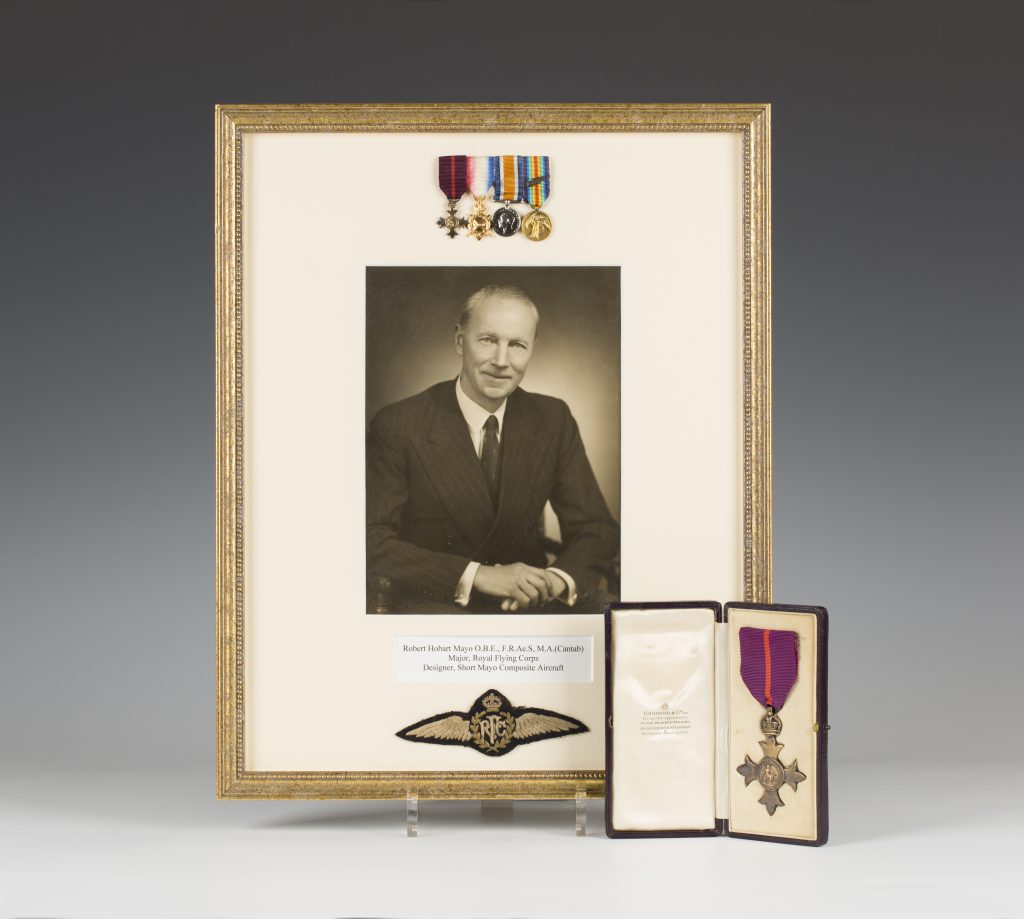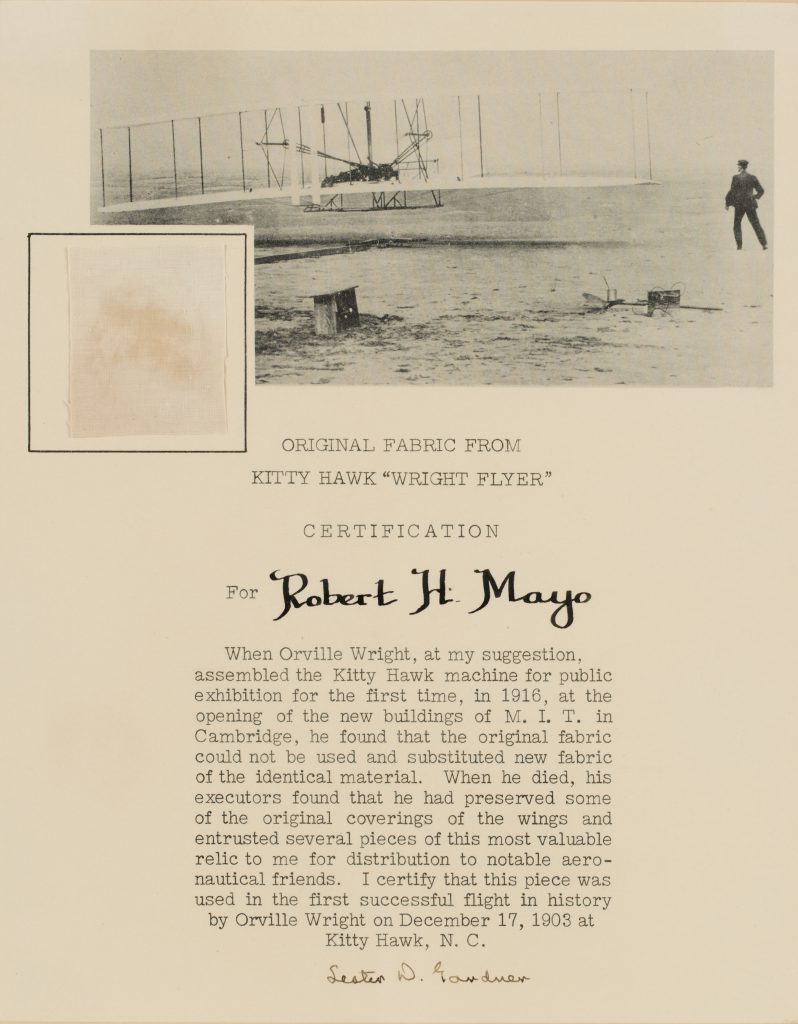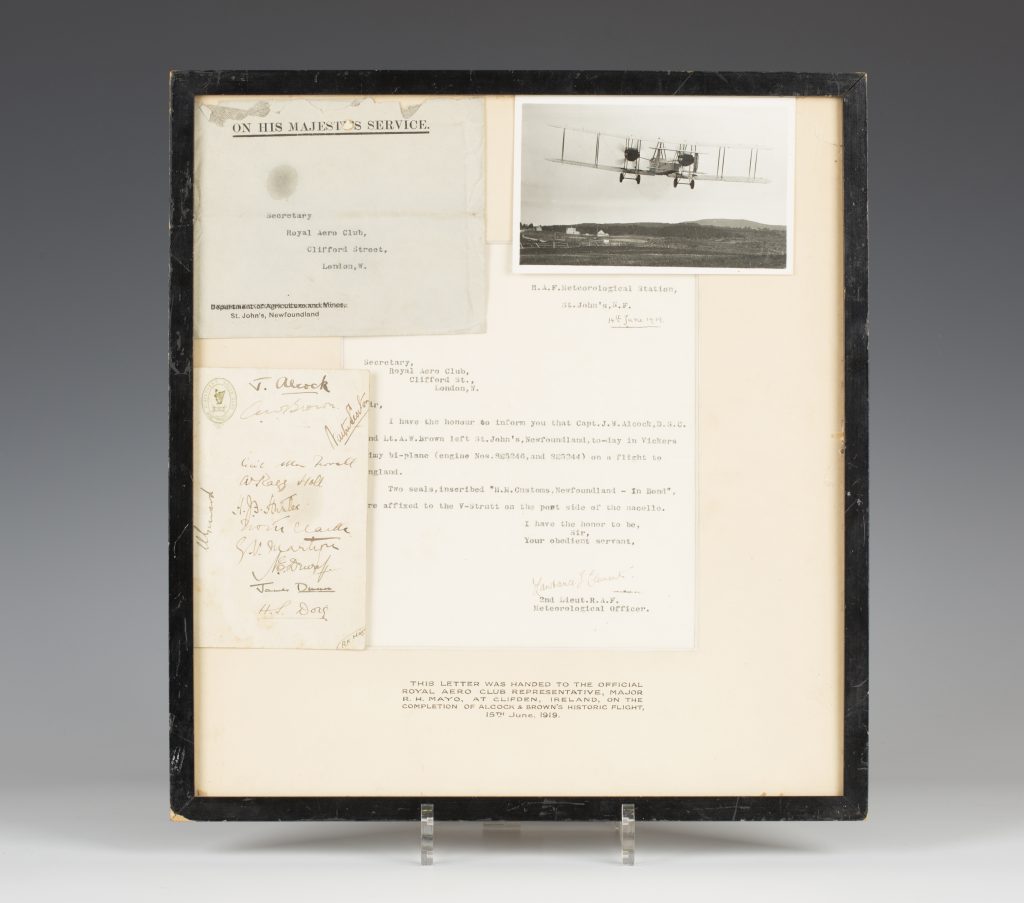
I was recently on a routine visit to a bungalow in Henfield, West Sussex when I discovered a trunk filled with the most remarkable collection of photographs, documents and medals relating to the late Major Robert Hobart Mayo, M.B.E., M.A.(Cantab)., Assoc. M. Inst. C.E. F.R.Ae.S., M. Inst. T. The collection sold for more than £10,000 including premium at Toovey’s.
Major Mayo was the designer of the Short-Mayo Composite flying boats. He would become a consulting aeronautical engineer alongside some of the most significant moments in 20th century aviation history.
Robert Mayo joined the staff of the Royal Aircraft Factory in 1913 and became head of the experimental department. He qualified as a pilot in December 1914 and went on to serve in the Royal Flying Corps in France during the First World War. On returning to England, he became Flight Commander in the Testing Squadron at Martlesham Heath and was personally responsible for the flying trials of a wide variety of new types of aircraft. In 1917 he was appointed head of the Design (Aeroplane) Section at the Air Ministry and he retained this post until 1919, when he resigned in order to take up Consulting Engineering. He was consulting engineer and technical manager to Instone Air Lines (later Imperial Airways) from 1923 to 1924.
Robert Mayo became a prominent official in competition flying; he was a timekeeper for the Schneider Trophy Contest in 1929 and chairman of the Records, Racing and Competition Committee of the Royal Aero Club in later years. He flew over one hundred different types of aircraft and had a thorough knowledge of aircraft and engines used in various commercial services.

On the 17th December 1903 the Wright brothers, Orville and Wilbur, famously made the first controlled flight of a ‘heavier than air’, powered aircraft known as the Kitty Hawk. Amongst the highlights of the collection was a framed fragment of material used to cover the wings from the original plane with a certificate of authenticity from Robert H. Mayo. He writes ‘When Orville Wright, at my suggestion, assembled the Kitty Hawk machine for public exhibition for the first time, in 1916, at the opening the new buildings of M.I.T. in Cambridge, he found that the original fabric could not be used and substituted new fabric of the identical material. When he died, his executors found that he had preserved some of the original coverings of the wings and entrusted several pieces of this most valuable relic to me for distribution to notable aeronautical friends. I certify that this piece was used in the first successful flight in history by Orville Wright on December 17, 1903 at Kitty Hawk, N. C.’ It realised £2600.

Technical advances in aviation continued at great pace. On the 14th June1919 John Alcock and Arthur Whitten Brown took off from Newfoundland in a converted Vickers Vimy bomber. They landed in Ireland 16 hours and 12 minutes later on 15th June 1919, having faced great challenges, to win the £10,000 Daily Mail newspaper prize for the first non-stop flight across the Atlantic. Robert Mayo had in his collection a gold engraved presentation match vesta, a letter and photographs relating to this first non-stop flight across the Atlantic which sold for £4000.
These and objects like them bring history to life in a vivid and exciting way which is reflected in their values.
The spirit of courage, adventure and engineering inventiveness expressed in the life of Major Robert H. Mayo will continue to be told through the pieces from this extraordinary historical archive.
By Rupert Toovey, a senior director of Toovey’s, the leading fine art auction house in West Sussex, based on the A24 at Washington. Originally published in the West Sussex Gazette.